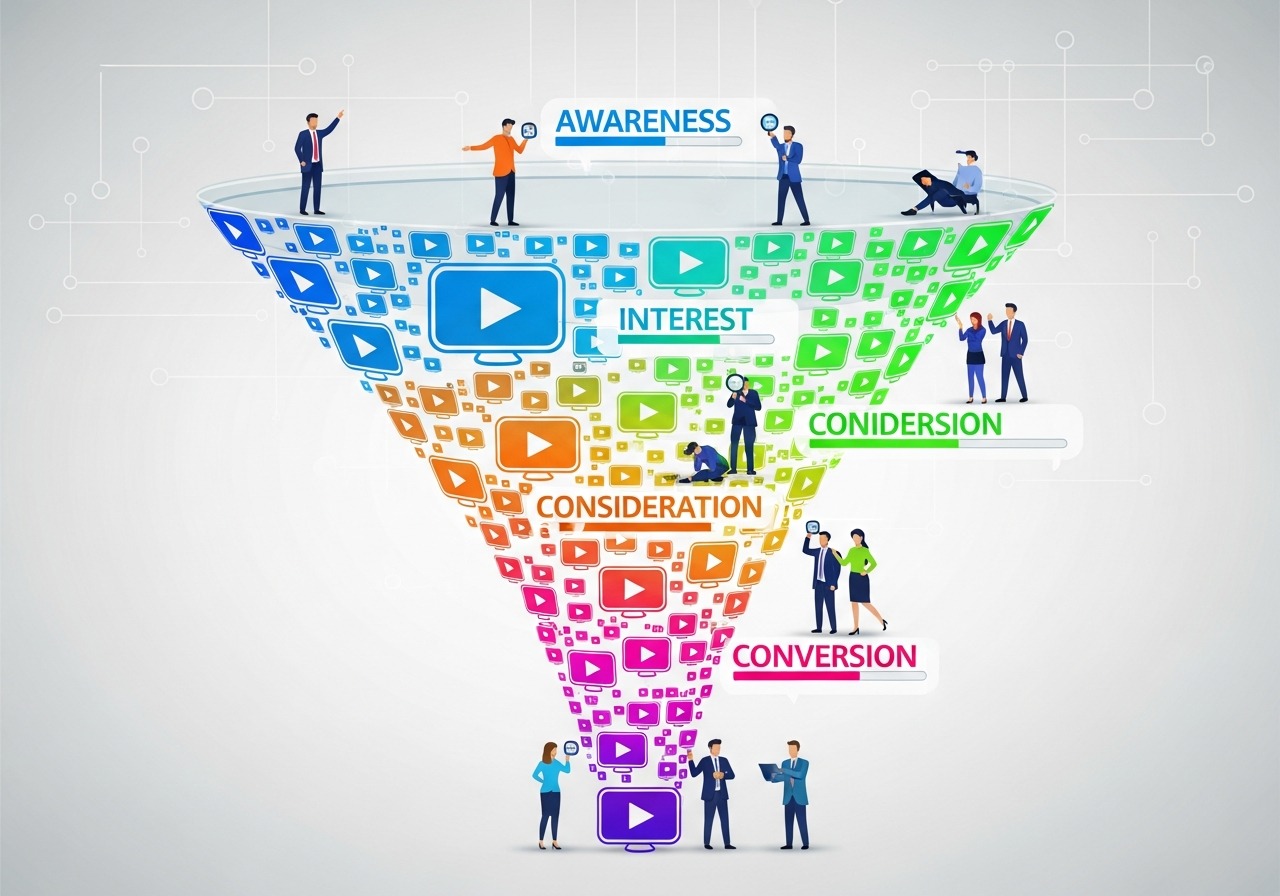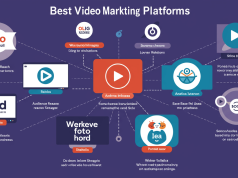Video marketing is a vital strategy for engaging audiences, building trust, and driving conversions. Effective campaigns combine storytelling, platform optimization, SEO, and analytics. From short social clips to in-depth tutorials, videos must align with audience needs, marketing goals, and funnel stages. Consistency, authenticity, and performance tracking ensure long-term success.
Video marketing has become an essential component of digital marketing strategies across industries. With over 3 billion hours of video watched on YouTube every month and social media platforms prioritizing video content, businesses can no longer afford to ignore this powerful medium.
Video marketing offers unique advantages that other content formats simply cannot match. It combines visual storytelling with audio elements to create emotional connections with viewers. This multisensory experience helps brands communicate complex messages quickly while building trust and credibility with their audience.
Understanding Video Marketing Fundamentals

Video marketing involves creating and sharing video content to promote your brand, products, or services. Unlike traditional advertising, effective video marketing focuses on providing value to viewers while subtly incorporating promotional elements.
The key lies in understanding that modern consumers expect authentic, helpful content rather than direct sales pitches. Successful video marketing builds relationships first and generates sales as a natural consequence of those connections.
Types of Video Marketing Content
Different types of videos serve various purposes throughout the customer journey. Educational videos work well for attracting new audiences, while product demonstrations help prospects make purchase decisions.
Behind-the-scenes content humanizes your brand and builds trust. Customer testimonials provide social proof, while how-to videos position your company as an industry expert. Live videos create urgency and encourage real-time engagement with your audience.
Developing Your Video Marketing Strategy
A successful video marketing campaign starts with clear objectives and a deep understanding of your target audience. Begin by defining what you want to achieve through video marketing, whether that’s increasing brand awareness, generating leads, or driving sales.
Research your audience’s preferences, pain points, and viewing habits. Consider where they consume video content and what types of videos resonate with them. This information will guide your content creation and distribution decisions.
Setting Goals and KPIs
Establish specific, measurable goals for your video marketing efforts. Common objectives include increasing website traffic, improving conversion rates, boosting social media engagement, or enhancing brand recognition.
Choose key performance indicators (KPIs) that align with your goals. Video views, engagement rates, click-through rates, and conversion metrics all provide valuable insights into your campaign’s effectiveness.
Planning and Creating Video Content
Content planning ensures your videos serve a purpose and align with your overall marketing strategy. Create a content calendar that maps videos to different stages of the buyer’s journey and various marketing campaigns.
Consider your resources and capabilities when planning content. While high-production videos have their place, authentic, well-planned content often outperforms expensive productions that lack substance or relevance.
Scriptwriting and Storyboarding
Strong videos start with solid scripts and clear visual plans. Your script should hook viewers within the first few seconds and maintain their attention throughout the video.
Structure your content with a compelling opening, informative middle section, and clear call-to-action. Storyboarding helps visualize how your script will translate into engaging video content and ensures smooth production.
Production Tips for Quality Videos
You don’t need expensive equipment to create effective marketing videos. Focus on good lighting, clear audio, and stable camera work. Natural light often works better than artificial lighting, and investing in a quality microphone typically improves your videos more than upgrading your camera.
Keep your videos concise and focused. Most social media platforms favor shorter content, and viewers have limited attention spans. Remove unnecessary elements that don’t contribute to your core message.
Optimizing Videos for Different Platforms

Each platform has unique requirements, audience expectations, and best practices. YouTube videos can be longer and more detailed, while Instagram Stories work best with vertical, bite-sized content.
LinkedIn audiences prefer professional, educational content, whereas TikTok users gravitate toward entertaining, creative videos. Tailor your content format, length, and style to match platform conventions and user behavior.
Video SEO Best Practices
Optimize your videos for search engines by including relevant keywords in titles, descriptions, and tags. Create compelling thumbnails that encourage clicks and accurately represent your content.
Add closed captions to improve accessibility and SEO. Upload transcripts when possible, as search engines can index this text. Encourage engagement through comments and shares, as these signals boost your video’s search rankings.
Distribution and Promotion Strategies
Creating great video content is only half the battle. Effective distribution ensures your videos reach the right audience at the right time. Develop a multi-channel distribution strategy that leverages both owned and earned media.
Share videos across your website, email newsletters, social media channels, and relevant online communities. Consider paid promotion to extend your reach and target specific audience segments.
Building a Video Marketing Funnel
Measuring Success and ROI
Track the right metrics to gain a comprehensive understanding of your video marketing performance. While vanity metrics like views, likes, and shares can indicate general interest, they don’t necessarily show whether your videos are driving meaningful business results. Focus on metrics that directly align with your objectives to make informed decisions.
Monitor conversion rates to see how many viewers take desired actions, such as signing up for a newsletter, downloading resources, or making a purchase. Track lead generation to measure how effectively your videos attract potential customers, and use revenue attribution to understand the financial impact of your video campaigns on overall sales.
Leverage analytics tools to examine viewer behavior in detail. Identify where users drop off, which parts of the video hold attention, and which content formats or topics generate the most engagement. Combining these quantitative insights with qualitative feedback, such as comments or surveys, will help refine your video strategy, improve content effectiveness, and maximize ROI over time.
Analytics Tools and Platforms
Advanced Video Marketing Techniques

As you become more comfortable with video marketing basics, explore advanced techniques to maximize your impact. Personalized video messages can significantly improve email open rates and response rates.
Interactive videos allow viewers to engage directly with your content through clickable elements, polls, and branching storylines. These formats typically generate higher engagement and provide valuable data about viewer preferences.
Leveraging User-Generated Content
Encourage customers to create video content featuring your products or services. User-generated content provides authentic social proof while reducing your content creation workload. By empowering your audience to showcase their experiences, you not only diversify the type of content associated with your brand but also strengthen the emotional connection between your customers and your offerings. UGC allows potential buyers to see real-world applications of your products, helping them make more confident purchasing decisions and fostering a sense of trust and reliability in your brand.
Create campaigns that motivate customers to share their experiences through video testimonials, product demonstrations, or creative challenges. Consider offering incentives, such as discounts, giveaways, or featuring their content on your official social channels, to boost participation. Encourage storytelling, creativity, and authenticity, as these elements resonate more deeply with viewers than scripted or polished advertisements. This approach builds community while expanding your content library, providing a continual stream of fresh, relatable, and engaging material that can be repurposed across multiple marketing channels, from social media and email newsletters to website galleries and paid ad campaigns. By leveraging user-generated content effectively, you create a collaborative ecosystem where customers feel valued, involved, and motivated to advocate for your brand, ultimately enhancing brand loyalty and long-term growth.
Making Video Marketing Work for Your Business

Video marketing success requires consistency, authenticity, and a willingness to adapt based on performance data. Start with simple, valuable content and gradually expand your efforts as you gain experience and see results.
Focus on serving your audience’s needs rather than constantly promoting your products. Build trust through helpful content, and sales opportunities will naturally follow. Remember that video marketing is a long-term strategy that builds momentum over time.
The most successful video marketers treat their content as conversations with their audience rather than one-way broadcasts. Engage with viewers through comments, respond to questions, and use feedback to improve future videos. This approach transforms video marketing from a promotional tool into a relationship-building platform that drives sustainable business growth.
Conclusion:
Video marketing is no longer optional—it’s a core component of effective digital strategies. By combining storytelling, platform optimization, SEO, analytics, and audience-focused content, businesses can build trust, drive engagement, and increase conversions. Success requires consistency, authenticity, and ongoing adaptation based on performance insights, turning videos into a powerful tool for long-term growth.
FAQ: Video Marketing
Q1: Why is video marketing important?
A: Video engages viewers through visual and audio storytelling, builds trust, simplifies complex messages, and improves conversions compared to text-based content.
Q2: What types of videos should I create?
A: Options include educational videos, product demos, behind-the-scenes content, testimonials, how-to guides, and live streams.
Q3: How do I measure video marketing success?
A: Track KPIs like views, engagement, click-through rates, conversion rates, and ROI. Use analytics tools to understand audience behavior and optimize content.
Q4: How do I optimize videos for different platforms?
A: Tailor format, length, style, and captions based on platform norms—YouTube supports longer, detailed videos; Instagram and TikTok favor short, vertical clips.
Q5: What is video SEO?
A: Video SEO includes keyword optimization in titles, descriptions, and tags, using transcripts, captions, and compelling thumbnails to improve visibility and search rankings.
Q6: How can I make videos more engaging?
A: Use storytelling, interactive elements, personalization, user-generated content, and clear calls-to-action to capture attention and encourage interaction.
Q7: Should I invest in high-production videos?
A: Not always. Authentic, well-planned videos often outperform expensive productions. Focus on content quality, relevance, and viewer value over flashy visuals.









